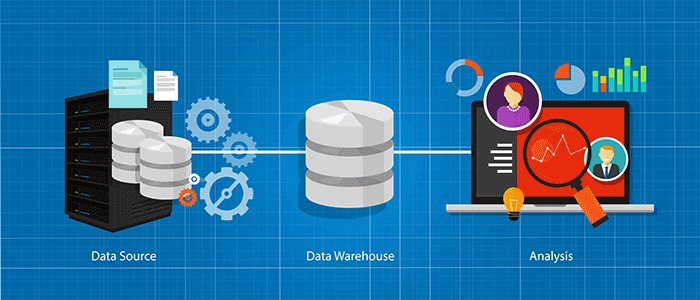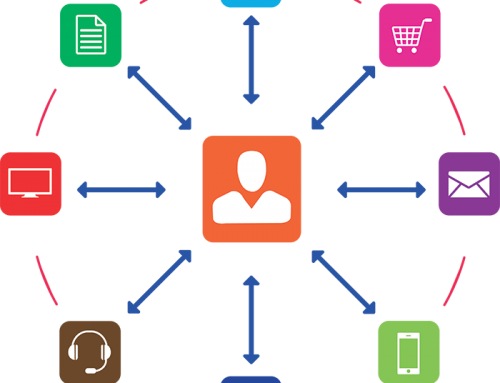In this constantly evolving digital marketplace, we’re gathering more data than ever before. The problem is, the more data we get, the more we need help sorting it, storing it, and analyzing it to make our organizations better at targeting prospects, improving processes, making sound business decisions, and increasing profits.
It’s difficult for businesses to handle and analyze all the information they’re receiving through digital and automated sources. In many cases, the sheer amount of data can be staggering – even overwhelming.
If you’re producing unique data daily, simply storing the information you’re collecting in a database is nowhere near adequate. It’s time to step up your data collection/storage/analysis capabilities with a custom-built Data Warehouse.
Evolving Technology
Data warehousing is changing quickly – especially with the cost-saving, flexible option of cloud vs. on-site storage – and it’s getting better all the time.
In the past, unwieldy on-site Data Warehouses required IT teams to estimate how much storage and computation power would be necessary, but if they erred, projects were delayed, budgets took hits, and it all negatively impacted business. They were also prohibitively expensive so only the largest, wealthiest companies could afford it.
With the advent of the Cloud, now organizations don’t have to purchase hardware and they only pay for as much storage as they need, when they need it. Now top companies are gathering data from many different data sources/streams/bases and importing it into their own powerful, cloud-based, Data Warehouses.
Database vs Data Warehouse
Let’s start by talking about the difference between the two options…
- Database: Simply put, a database is an organized collection of data from a limited number of apps and sources. Reporting and analysis can’t be performed across very large data sets with data from multiple sources, and performing a separate analysis on each data source is inefficient and cost-prohibitive.
- Custom-built Data Warehouse: This is a database, or group of databases, that are custom-designed to collect, store, filter, retrieve, and analyze large collections of data. Data warehouses are used for aggregating data from many different data sources, and enabling the use of that data for personalization, visualization, reporting, and analysis. Business leaders rely on select, filtered information and reports from Data Warehouses to guide management decisions.
How it Works

- Data sources: Data is gathered from operational systems, such as your CRM, legacy systems, ERP, Excel, financial apps, etc.
- Data transformation: After data is collected, the Extract, Transform, Load (ETL) process begins. This is where the data is discovered, cleansed, enhanced, normalized and unified.
- The warehouse: This is the location where the data is stored
Data warehouses are optimized to retrieve data to assist users with analysis and reporting. The data records within the warehouse contain details to enable filtered searches. Once the data is collected, cleaned, sorted and stored, data analysis tools such as Business Intelligence (BI) software access the data within the warehouse.
You can also opt to have your Data Warehouse feed decentralized systems called “data marts” where information from the warehouse is organized and can be accessed by specific business groups like finance, marketing, and sales.
Advantages of Having a Custom-built Data Warehouse
- Access important information quickly – With simple filtered searches, you can easily access and analyze vast stores of valuable data.
- Filter, aggregate, and export your data – Extract data quickly by downloading it to your BI tool or run regular exports automatically to gain insight about sales and marketing performance, to spot trends, and focus on ways to improve performance.
- Integrate with your BI Tool – Use your favorite Business Intelligence tool to pull data from the Data Warehouse to visualize it, analyze it, and prepare reports.
- Build templates for reports – Report on themes, trends, aggregations, profits, losses, ROI, and countless other categories of your choice.
- Paint a Picture –Present information to others by creating easy-to-understand charts, reports, graphs and other visualization tools.
- Gain Insights – Learn from your organization’s historical performance and ongoing operations, understand how your audience is engaging with marketing efforts, and use the information to improve processes, outreach efforts and the bottom line.
The Future of the Data Warehouse
Digital data is expected to grow by 42 percent by 2020, according to the International Data Corporation (IDC) who provides market intelligence for IT, telecom, and consumer tech markets. They also report that many large organizations are evaluating Cloud Data Warehousing as a viable solution to cope with growing data volumes.
The largest global corporations are already using data warehousing to organize data streaming in from corporate branches and operations centers around the world.
Contemporary successful business leaders depend on data-driven strategies and make decisions based on facts. Data Warehousing has become indispensable because it improves the speed and efficiency of accessing different data sets, and it makes it easier for executives and decision-makers to gain insights to guide business strategies that can truly set them apart from their competitors.
Contact us today to learn how Reach Marketing can work with you to create your dream custom-built Data Warehouse – the essential missing element that will help your business grow and remain fiercely competitive in this ever-evolving global marketplace.





